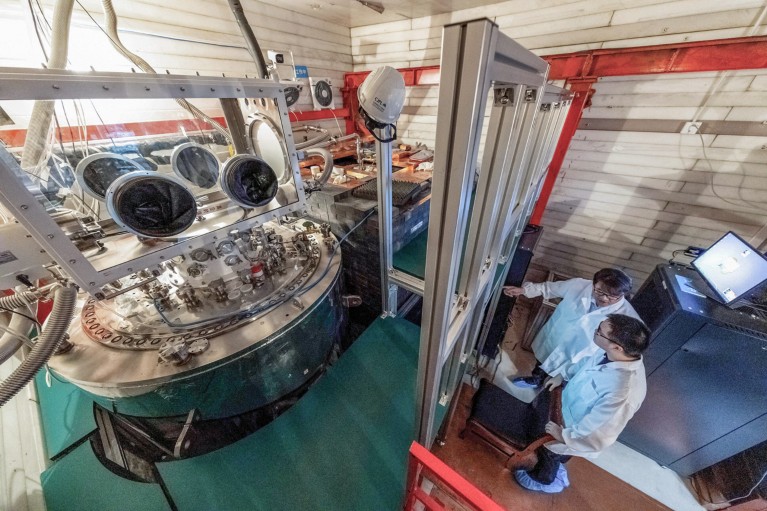- COMMENT
China’s shift towards ‘organized research’: how can coordination and innovation co-exist?

The world’s deepest and largest underground laboratory is 2,400 metres below the Jinping Mountains in southwest China. Credit: IMAGO/Shen Bohan/Alamy
Access options
Access Nature and 54 other Nature Portfolio journals
Get Nature+, our best-value online-access subscription
$32.99 / 30 days
cancel any time
Subscribe to this journal
Receive 51 print issues and online access
$199.00 per year
only $3.90 per issue
Rent or buy this article
Prices vary by article type
from$1.95
to$39.95
Prices may be subject to local taxes which are calculated during checkout
Nature 643, 631-634 (2025)
doi: https://doi.org/10.1038/d41586-025-02199-1
References
Ma, D., Cai, Z. & Zhu, C. Technol. Soc. 70, 102031 (2022).
Bateman, J. U.S.–China Technological “Decoupling” (Carnegie Endowment for International Peace, 2022).
National Natural Science Foundation of China. NSFC Annual Report 2022 (NSFC, 2022).
Yang, H. et al. [in Chinese] Introduction on Proposals Receiving and Accepting During the Batch Application Period in 2024 (NSFC, 2024).
Fortin, J.-M. & Currie, D. J. PLoS ONE 8, e65263 (2013).
Wu, L., Wang, D. & Evans, J. A. Nature 566, 378–382 (2019).
National Academies of Sciences, Engineering, and Medicine. Enhancing the Effectiveness of Team Science (National Academies Press, 2015).
Competing Interests
The authors declare no competing interests.

 How China can become a biotechnology superpower
How China can become a biotechnology superpower
 Why China needs to review its approach to research evaluation
Why China needs to review its approach to research evaluation
 How to sustain scientific collaboration amid worsening US–China relations
How to sustain scientific collaboration amid worsening US–China relations
 China made waves with Deepseek, but its real ambition is AI-driven industrial innovation
China made waves with Deepseek, but its real ambition is AI-driven industrial innovation
 How the United States became a science superpower — and how quickly it could crumble
How the United States became a science superpower — and how quickly it could crumble







